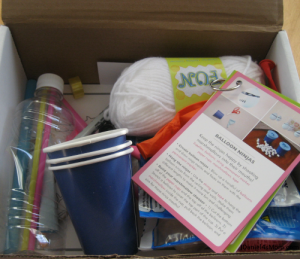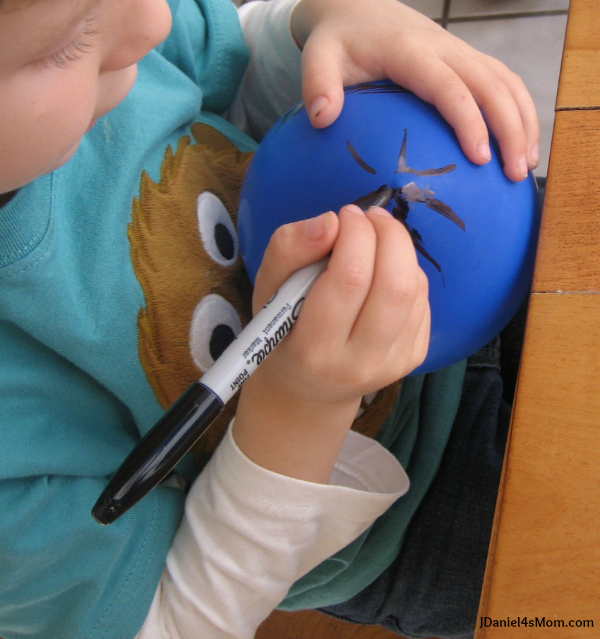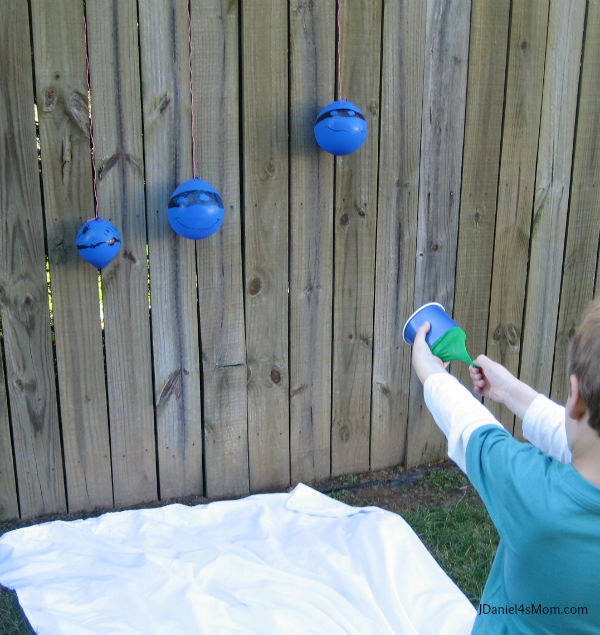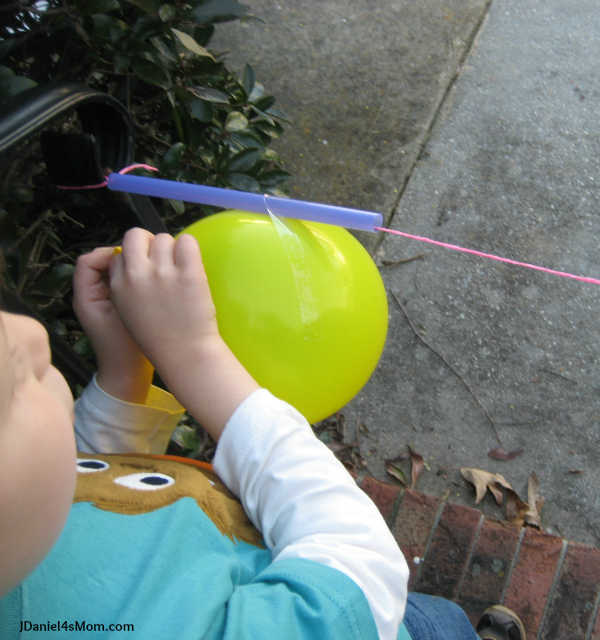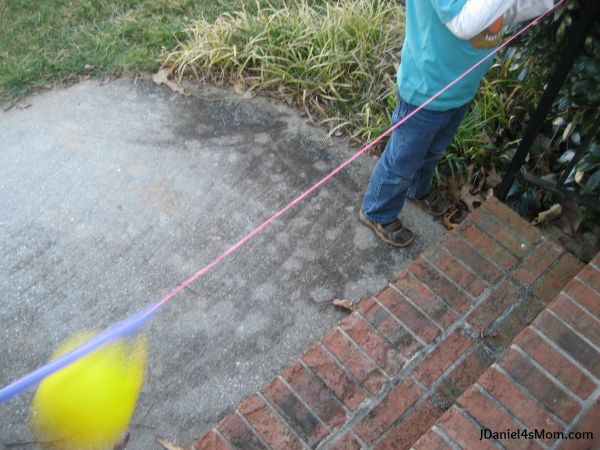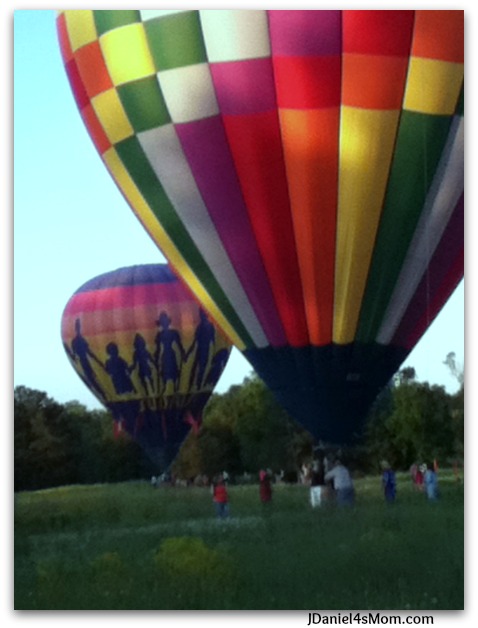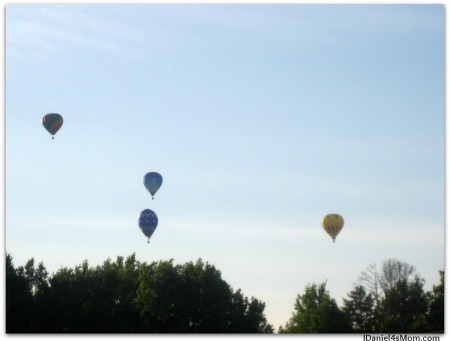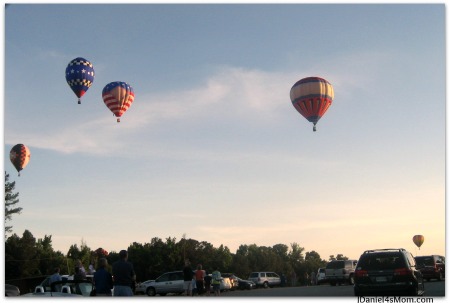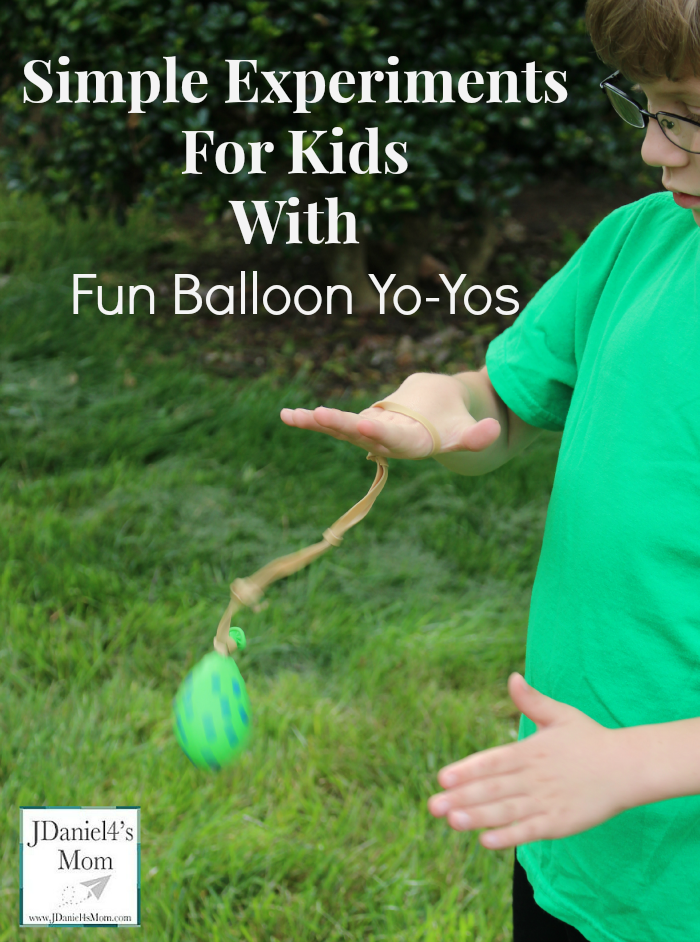
You may have made balloon yo-yos at your house, but we hadn’t made them before this week. As a part of the the A-Z Science Experiments for Kids series hosted by Frogs and Snails and Puppy Dog Tails, my son and I conducted a series of cool experiments that explored balloon yo-yos. (You may remember earlier in the series we explored friction and wind.)
I read a number of sets of directions on how to make a balloon yo-yos. We used the directions found on Tinkerlab. Her directions said you could use water, seeds, or rice to fill the balloons that would become yo-yos.
We filled one balloon with a mixture of dried beans and one with rice. Each balloon had about a 1/2 a cup of filler placed inside it. Tinkerlab directions recommended using a funnel to add your filler and so we did just that.
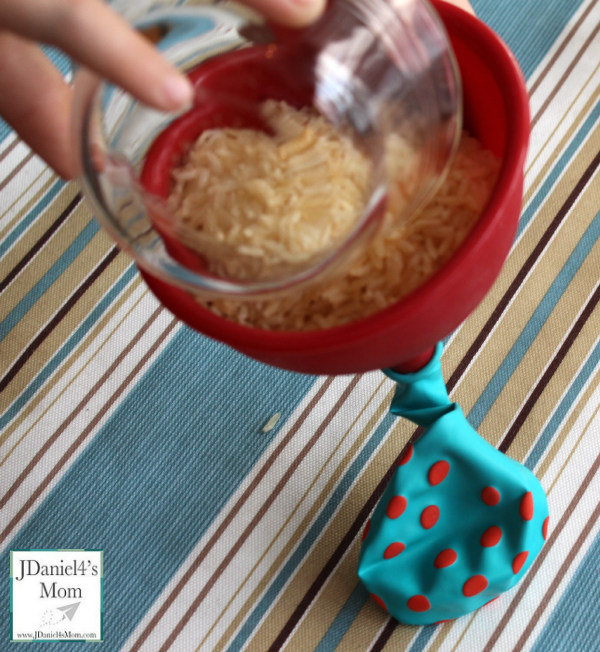
Hint: One of us tried to dump all of one of the ingredients into the funnel at one time. It went way faster and made less mess when it was added a little at a time.
When all of each item or as much as we could get in was in, we tied a knot on the end of the balloon. Then we tied a rope made of rubber bands onto it. The rope was created by slipping one end of a rubber band through the another rubber band. Then the first band was pulled back through itself. (It sounds tricky, but it isn’t.) The same looping technique was used to attach the strand of bands to the balloon.
Wait! What supplies did we use for this science experiment?

The links below are affiliate links.
- Dried beans
- Rice
- Polka Dot Balloons – (You don’t have to have balloons with dots, but we sure enjoyed them at my house.)
- Funnel
- Rubber bands
Here are some things we had to talk about before we could form our hypothesis:
With the balloons yo-yos done we were ready to form a hypothesis about how each balloon would act differently or the same when the balloon was dropped.
Would having a different object inside it make it act and bounce differently?
Which yo-yo balloon would pull down toward the ground more?
What would be the best way to hold the rubber band strand?
What was the best way to get the yo-yo going?
Did bouncing our hands or our whole bodies affect how well the yo-yo worked?
Experiments for Kids With Balloon Yo-Yos

We both took turns bouncing the yo-yos up and down.
I found that placing the rubber band at the end of the stand of bands around my flattened hand worked the best. I was able to hit the yo-yo as it bounced up with the palm of my hand.
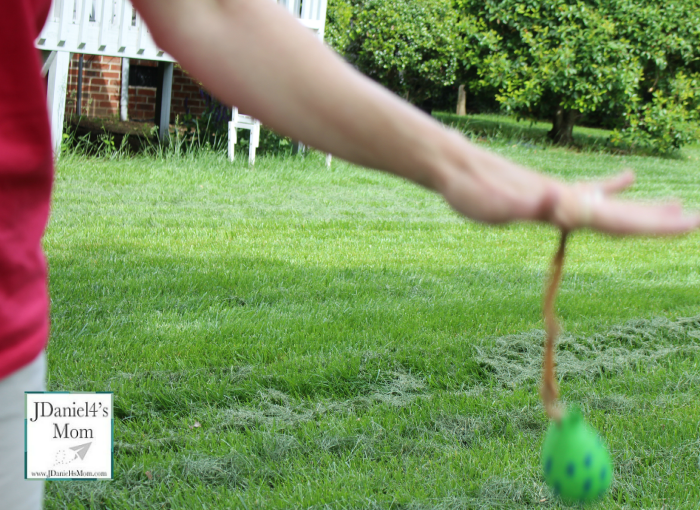
I couldn’t get the yo-yo to bounce back up when I tried to have it on just one or two fingers.
JDaniel liked to use the same technique that I did. He tended to hold one hand out to the side to guide it back on course if it started to swing out instead of going down. He also tried the “Around the World” yo-yo trick with the balloon yo-yo. It was much more fun than simply trying to get it to go up and down.
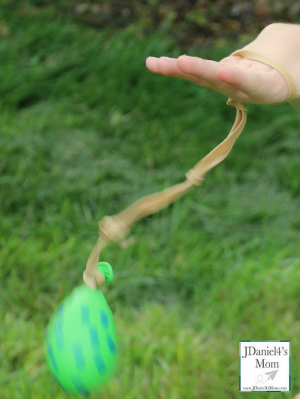
Results of the Experiments for Kids
- We didn’t find a difference in the way the two balloons yo-yos bounced. My son tended to like to explore and play with the yo-yo with beans though.
- We both liked having the rubber band over our hands while bouncing the yo-yo. After looking at the pictures we took I found that my son and I both tended to have our thumbs splayed away from our hands.
- As I mentioned earlier, my son liked swinging the yo-yo around before going up and down. Sometimes just around and around. I loved just going up and down. We didn’t really decide on the best way to bounce the yo-yo.
- Bouncing your hand or head or your whole body was fun, but it really didn’t make a difference in how the yo-yo bounced.
We will really need to conduct some of these experiments for kids with water balloon yo-yos this summer. It will be fun to see how they work out in our experiments.
You will find more great science experiments for kids on my Early Learning Science Pinterest board.
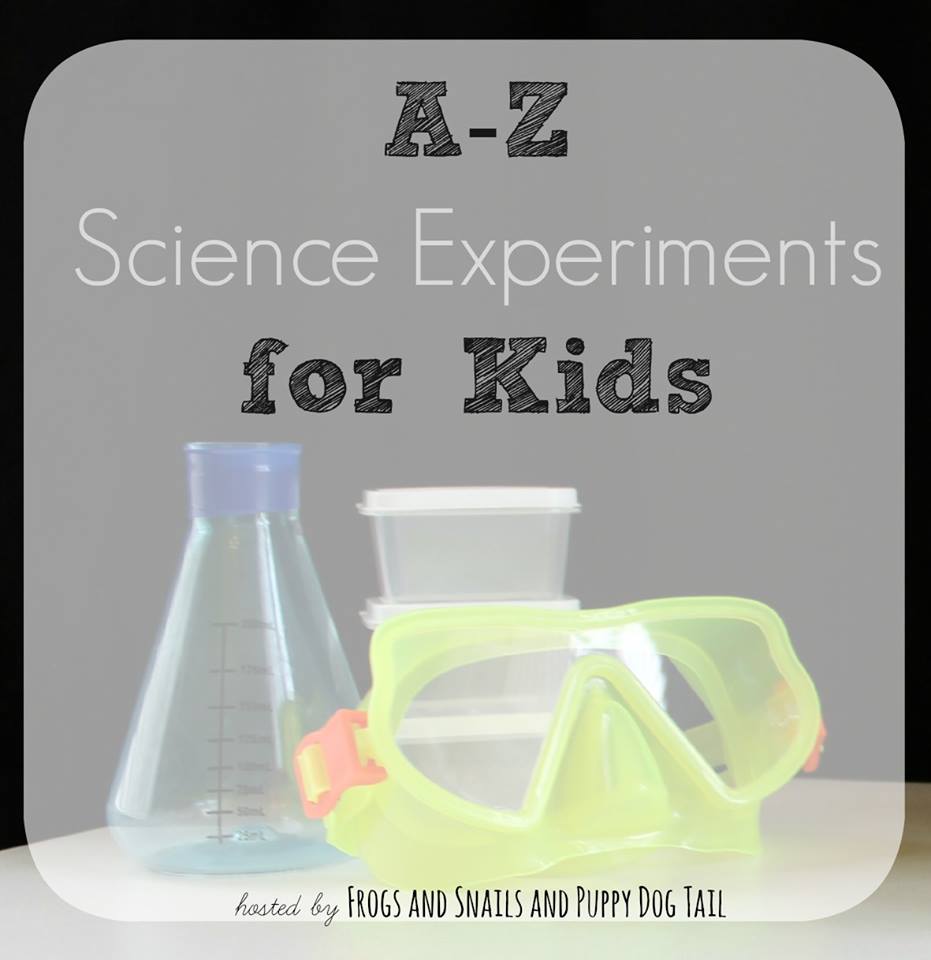
Please stop by and check out all the other A to Z of Science Experiments for kids. There is a complete list of them on Frogs and Snails and Puppy Dog Tails.
If you try these balloon yo-yo experiments with your children, please leave me a comment below telling me about how your experiments went or share a picture of it on my Facebook page.








